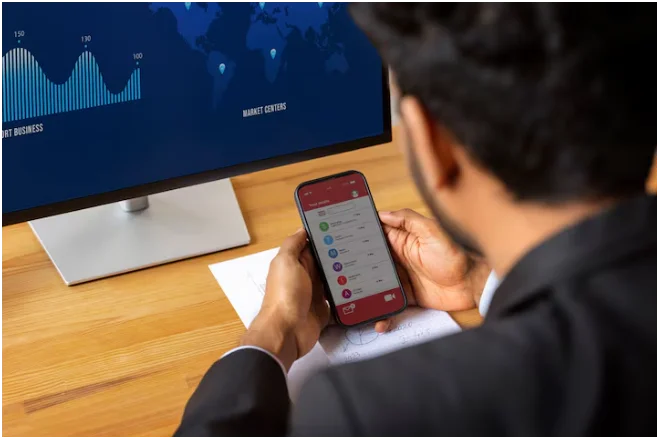For the Indian investor, XRP presents a new kind of opportunity and a new set of questions. It’s a digital asset with a clear real-world application, but its journey in a nation still defining its crypto rules demands a thoughtful approach. This article explores XRP’s place in the market and the complexities of investing in it from India.
In India, your relationship with currency has always been complex. It is a long story, really. You started with bartering goods, a direct exchange of what you had for what you needed. That was a pretty good system for its time, but it wasn’t perfect. Someone would always end up with a less valuable item in a trade. The solution was the introduction of standardized coins, a medium of exchange everyone could agree on. The idea of money has since changed constantly. From metal coins to paper notes and now, with the advent of digital transfers, you see money that exists only as data. And now there’s cryptocurrency.
The Price of XRP in India
The live price of xrp / inr is around ₹260 INR at the time of writing, but you should always check a reputable exchange for updated prices. It’s widely considered one of the most well-known cryptocurrencies in the industry. Many people in India are putting money into it these days. But how do you start?
To buy XRP, you must first find a crypto exchange that is registered with FIU, India’s Financial Intelligence Unit. After you’ve picked a secure exchange, get ready to verify who you are, a process known as Know Your Customer (KYC). You’ll submit documents like your Aadhaar Card and PAN Card. The verification is usually fast, taking only a few minutes. From there, you can fund your account using common methods like UPI, bank transfers, or even a credit card.
Investing Beyond Bitcoin
XRP, the digital asset created by Ripple, serves a different purpose than Bitcoin. Its creators did not design it as a general digital currency. Instead, they built it to fix the issue of slow and expensive international money transfers. Think about the fees and days it takes for a regular bank wire. An XRP transaction can settle in seconds and costs barely anything, a fraction of a cent. This speed is pretty remarkable, with transactions finishing in just about three to five seconds. Over 100 financial institutions around the world now use Ripple’s technology (which uses XRP as a bridge currency) because of its efficiency.
And while BTC remains dominant, other digital assets are finding their way into corporate holdings. Recent research from Binance showed that 116 public companies hold 809.1K BTC. That number got a boost from Bitcoin’s peak price (around US$112K) and favorable accounting rules. But BTC isn’t the only asset in these treasuries. A few companies are also adding ETH, SOL, and XRP to their balance sheets. The future growth of these company treasuries will largely depend on market trends and new regulations.
The Legal Standing of Cryptocurrency
Cryptocurrency represents the latest chapter in the history of money. Cryptography, a highly complex method of computation and verification, is used to build a decentralized system that moves away from the government-controlled financial systems you’ve always known. There are thousands of cryptocurrencies in the world today. Many of them function as investment vehicles. Ripple is one of the standout among them.
The Indian position on cryptocurrencies has been a gradual process with evolving regulations. Though not considered legal tender, cryptocurrencies can be bought, sold or invested in. The government views them as Virtual Digital Assets, a specific category for taxation purposes. This is a critical point for any investor. You have to pay a 30% tax on any profits you make from crypto investments. A 1% TDS (Tax Deducted at Source) is also applied to transactions over a certain threshold.
The Government’s Position
The regulatory history shows this hesitancy. The Reserve Bank of India (RBI) first acknowledged digital currencies in 2013. But it mostly took a firm stance against them, which led to a 2018 circular prohibiting banks from dealing with crypto-related payments.
The Supreme Court overturned that ban in the 2020 case of Internet and Mobile Association of India vs. Reserve Bank of India, which deemed the RBI’s 2018 circular unconstitutional. Since then, the Indian government’s legal approach has been a mix of caution and observation.
A Call for More Clarity
Discussions have been held on new bills banning private cryptocurrencies and creating an official digital currency issued by the Reserve Bank of India. But no blanket ban has been implemented. The government instead opted for a tough tax and compliance framework, requiring crypto exchanges to register with the FIU and release user data for tax purposes. And that uncertainty has kept millions of investors in limbo.
Over the years, Indians have invested billions of rupees in cryptocurrencies. A ban would have a significant impact on a large segment of the population. The government seems to understand this. That’s why it has moved slowly, opting for a wait-and-see approach. But without a clear, comprehensive legal framework, the country is also not fully participating in what many see as the future of finance and technology.
The situation for India is critical. Some policymakers might find a blanket ban safe, but they would also be left behind. The global cryptocurrency market is huge, with a total market capitalization in the trillions of dollars. This is not a tiny niche you can just ignore. The government has to find a balance between protecting investors and the national financial system, while also allowing for innovation. You have to ask yourself, will the Indian government take a definitive stance soon? Or will this period of regulatory limbo continue?
Key Takeaways for Investors
It’s also important to follow the news around Ripple’s legal battles in the US. Binance reported that the legal battle between the SEC and Ripple Labs concluded in August, following a joint filing that confirmed the dismissal of both the regulator’s appeal and the blockchain company’s cross-appeal. That opens the door for XRP to be listed on more exchanges.
A final tip for anyone interested in this space is to always start small and never invest more than you are willing to lose. And of course, never, ever share your wallet passwords or OTPs with anyone. Your personal security is the most important part of your investment. The technology behind it offers a glimpse into a future of instantaneous, low-cost financial transactions. This could have a huge effect on cross-border payments for individuals and institutions alike. But whatever happens, the conversation has already changed.


